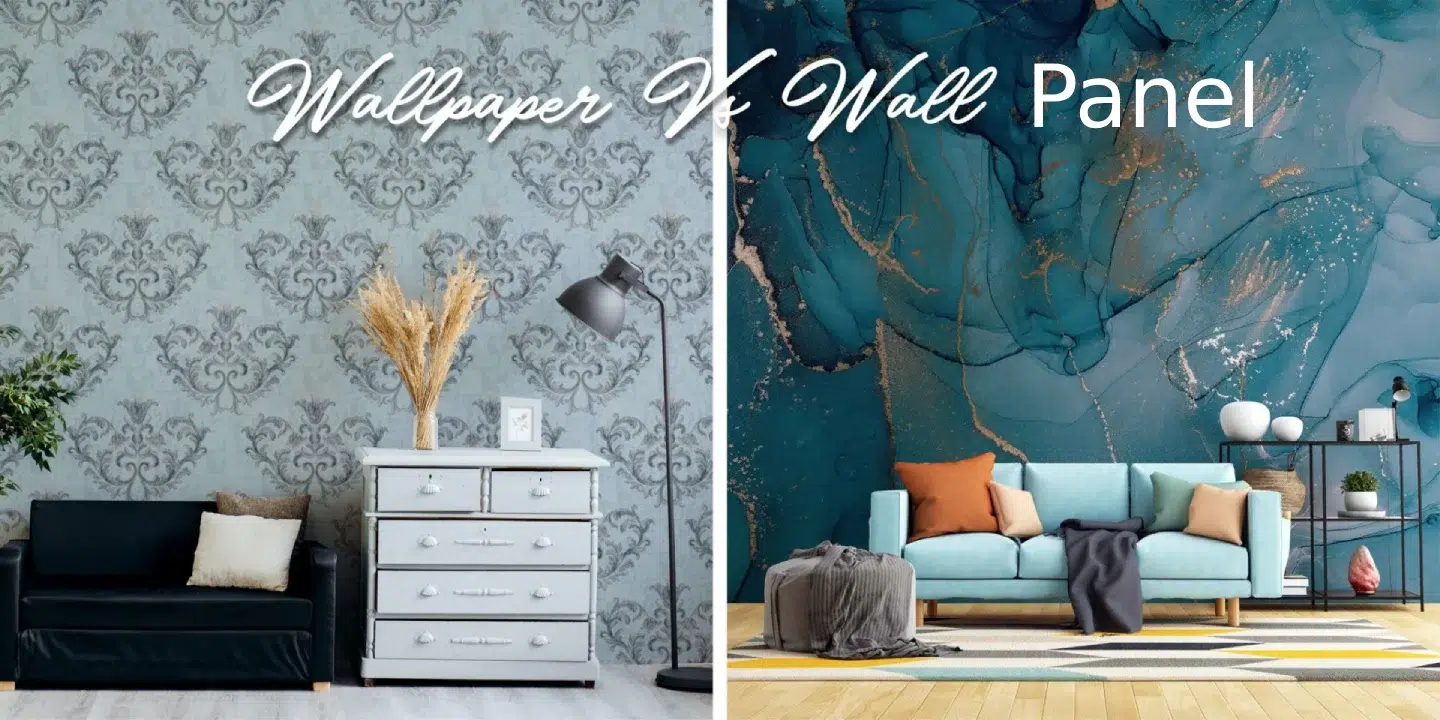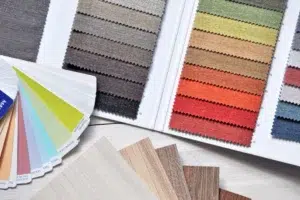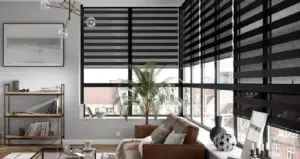When it comes to transforming the appearance and atmosphere of your walls, two popular options that often come into consideration are wall panels and wallpaper. Each of these choices brings unique advantages and potential drawbacks, making it important to weigh them based on your specific needs and preferences carefully. This article delves into a detailed comparison of these two options, exploring their aesthetics, durability, and cost implications. By understanding these aspects, you’ll be better equipped to make an informed decision that enhances your home’s overall look and feel.
Aesthetics: Crafting a Personalized Space
Wall Panels: Wall panels are a fantastic choice if you’re looking to add texture, depth, and character to your walls. Available in an array of materials, from wood to MDF to PVC, wall panels come in various textures, patterns, and finishes that can instantly elevate the visual appeal of any room. Whether you’re aiming for a cozy, rustic vibe with wood paneling or a sleek, contemporary look with smooth, glossy finishes, wall panels provide the versatility to cater to different design aesthetics. Additionally, wall panels can be used to create a dramatic focal point that draws the eye, or they can be used more subtly to add just a touch of texture and interest to an otherwise plain wall. The three-dimensional nature of wall panels adds a tactile quality to your space, making the walls feel more dynamic and engaging.
Wallpaper: On the other hand, wallpaper offers an incredibly wide range of patterns, colors, and textures that can transform a room with its sheer variety. Whether you prefer bold, geometric patterns or delicate, floral designs, there’s a wallpaper out there to suit every taste. Wallpaper is particularly well-suited for creating a cohesive, seamless look across a room, as it can be applied over entire walls without the interruptions of joints and seams that come with wall panels. This ability to cover large areas smoothly makes wallpaper an excellent choice for those who want a unified, polished appearance. Furthermore, wallpaper allows for more intricate and detailed designs that can be difficult to achieve with wall panels, allowing you to infuse your space with unique, personalized flair.
Durability: Considering Long-Term Investment
Wall Panels: In terms of durability, wall panels are often the sturdier option. They are typically made from materials that are more resistant to wear and tear, making them a great choice for high-traffic areas or spaces where walls might be subject to impact, such as hallways, kitchens, or living rooms. The solid construction of wall panels means they can withstand knocks and bumps better than wallpaper, and they are also generally easier to clean. For example, a quick wipe-down with a damp cloth is usually enough to keep wall panels looking fresh and new. Moreover, some wall panels are designed to be moisture-resistant, which makes them suitable for use in bathrooms or other damp environments where wallpaper might not hold up as well.
Wallpaper: While wallpaper can also be quite durable, especially when high-quality materials are used, it is generally more susceptible to damage from moisture, tearing, or peeling over time. This makes it a less ideal option for areas that are prone to humidity or where walls are likely to be touched frequently. However, many modern wallpapers come with protective coatings that enhance their durability, making them more resistant to fading, stains, and scratches. Additionally, wallpaper offers the advantage of being relatively easy to change when you’re ready for a new look, as it can be removed and replaced more easily than wall panels.
Cost: Balancing Budget and Quality
Wall Panels: When it comes to cost, wall panels can be more expensive upfront, particularly if you opt for high-end materials or custom designs. The installation process for wall panels can also add to the overall cost, as it often requires professional help to ensure a perfect fit and finish. However, the investment in wall panels can pay off in the long run due to their durability and the added value they bring to your home. The high-quality materials used in wall panels often contribute to their longer lifespan, reducing the need for frequent replacements or repairs.
Wallpaper: In contrast, wallpaper is generally a more budget-friendly option. It is typically less expensive to purchase and can often be installed without professional help, especially if you have some DIY experience. This makes wallpaper an attractive option for those looking to refresh their space without spending a fortune. However, it’s important to consider the long-term costs associated with wallpaper, as it may need to be replaced more frequently than wall panels, particularly in areas where it is exposed to high levels of moisture or wear.
Installation Complexity: Navigating the Challenges
Wall Panels: Installing wall panels is often a more complex and demanding task compared to hanging wallpaper. The process usually involves measuring, cutting, and securely attaching the panels to the wall, which can be particularly challenging with heavier materials like wood or metal. Due to these complexities, wall panel installation typically requires the expertise of a professional to ensure that the panels are aligned correctly and that the final result is both aesthetically pleasing and structurally sound. Hiring a professional can add to the overall cost, but it can also provide peace of mind knowing that the job has been done right.
Wallpaper: On the other hand, wallpaper installation is generally considered to be a more straightforward process, though it still requires a certain level of skill and attention to detail. Proper wall preparation is crucial, as any imperfections on the wall can lead to bubbles, wrinkles, or seams that are visible after the wallpaper is applied. If you have some experience with DIY projects, you may be able to install wallpaper yourself, saving on labor costs. However, even wallpaper can present challenges, particularly when working with intricate patterns that need to be matched up precisely or when applying wallpaper to corners and edges.
DIY Potential: Assessing Your Skills
Wallpaper: For those who enjoy DIY projects and have a bit of patience, wallpaper can be a rewarding and cost-effective way to update your home. Many homeowners take on wallpapering as a DIY task, especially with modern wallpapers that are designed for easy application. The key to a successful DIY wallpaper project is careful planning, precise measurement, and a steady hand. With the right tools and a little practice, you can achieve a professional-looking finish.
Wall Panels: Wall panels, however, present a more significant challenge for DIY enthusiasts. The weight and size of the panels, combined with the need for precision in alignment and secure attachment, make wall panel installation a project that’s often best left to professionals. While it’s possible to install wall panels on your own, particularly if you’re working with lightweight materials or small areas, the complexity of the task means that many homeowners prefer to hire a professional to ensure a flawless result.
Sound Absorption: Creating a Quieter Space
Wall Panels: One of the often-overlooked benefits of wall panels is their ability to absorb sound, which can be a valuable feature in rooms where noise reduction is a priority. The thickness and density of wall panels can help to muffle sounds, making them an excellent choice for spaces like home offices, bedrooms, or living rooms where you want to create a more peaceful environment. This sound-absorbing quality can also be beneficial in reducing echo in large or open-plan spaces, adding to the comfort and functionality of your home.
Wallpaper: While wallpaper can also contribute to noise reduction to some extent, it generally doesn’t offer the same level of sound absorption as wall panels. Thicker, textured wallpapers may help to dampen noise slightly, but they are not as effective as wall panels in creating a quieter space. If sound absorption is a critical factor in your decision, wall panels may be the better option for your needs.
Environmental Impact: Making an Eco-Friendly Choice
Wall Panels: In today’s environmentally conscious world, the materials you choose for your home can have a significant impact on the environment. Wall panels made from sustainable materials like reclaimed wood or bamboo are increasingly popular among eco-conscious homeowners. These materials not only offer a unique aesthetic but also reduce the environmental footprint of your renovation project. Additionally, some wall panels are made from recycled or recyclable materials, further enhancing their eco-friendly credentials.
Wallpaper: While traditional wallpaper options may not be as environmentally friendly, there are now many wallpapers available that are made from sustainable materials or are printed with eco-friendly inks. However, the environmental impact of wallpaper can vary depending on the type of paper and the production process. If sustainability is a priority for you, it’s worth seeking out wallpapers that are certified as environmentally friendly or that come from companies with strong environmental policies.
Conclusion: Finding the Right Fit for Your Home
Choosing between wall panels and wallpaper ultimately comes down to your personal preferences, budget, and the specific needs of your space. Both options have their unique advantages, and by carefully considering the factors discussed—such as aesthetics, durability, installation complexity, sound absorption, and environmental impact—you can select the wall covering that best enhances your home’s beauty and functionality. Whether you opt for the texture and durability of wall panels or the seamless and versatile design of wallpaper, making an informed choice will help you create a space that reflects your style and meets your practical needs.
FAQs
Q: Can I install wall panels myself?
A: While it is possible to install wall panels on your own, it’s generally recommended to hire a professional to ensure a neat and accurate installation. The weight and complexity of wall panels can make DIY installation challenging, and a professional can help you achieve the best results.
Q: Can I apply wallpaper over existing wallpaper?
A: It’s generally not recommended to apply new wallpaper over old wallpaper. The old wallpaper may peel or bubble, which can negatively affect the appearance of the new wallpaper. For the best results, it’s advisable to remove the existing wallpaper before applying a new one.
Q: What are the different types of wall panels?
A: Wall panels come in a variety of materials, including wood, MDF, PVC, and metal. Each type offers different textures, patterns, and finishes, allowing you to choose a style that suits your home’s decor. From rustic wood panels to sleek, modern metal finishes, there’s a wall panel option to suit every taste.
Q: How long do wall panels last?
A: Wall panels are known for their durability and can last for many years with proper care. The lifespan of wall panels depends on the material used, the quality of installation, and how well they are maintained. With regular cleaning and care, wall panels can remain a stylish and functional part of your home for a long time.
Q: Can I remove wall panels without damaging the wall?
A: Removing wall panels can be a tricky process, and it may require professional assistance to avoid damaging the underlying wall surface. Depending on the type of adhesive used and the condition of the wall, some damage may occur during removal. It’s always a good idea to consult with a professional before attempting to remove wall panels to ensure the best possible outcome.





